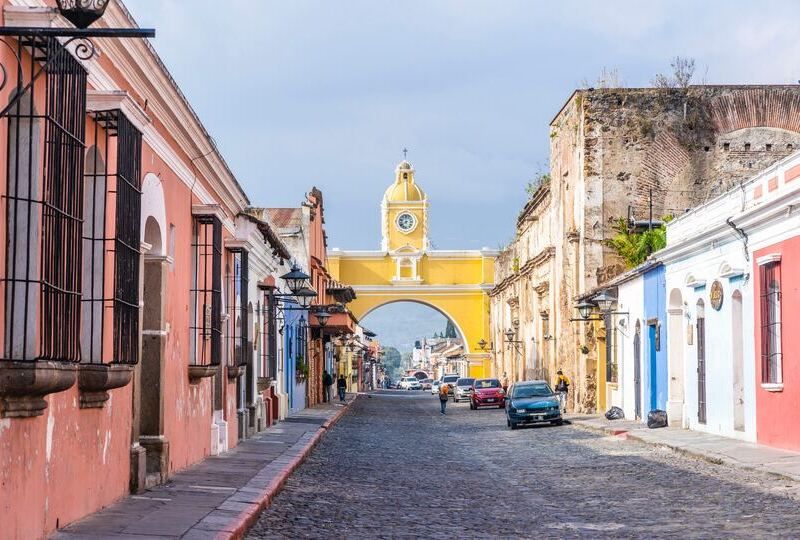How to Learn Spanish by Embracing Hispanic Culture

The Spanish language originally comes from Spain. In 1492, the Europeans brought Spanish to the Americas, combining their culture with the existent indigenous cultures that were already there. The slave trade brought African influences to Latin America, as well. As a result, Hispanic culture is rich with a mixture of heritage and traditions like no other area in the world. Not everyone has direct access to this culture, but in the United States, we are lucky to be in close contact with many aspects of Latin American culture. Embracing aspects of the Hispanic way of life can help you appreciate the similarities and differences it has with your own culture and learn Spanish along the way!

Learn Spanish Through Music
One way to embrace Hispanic culture is by learning the music. Take a song that you like, print the lyrics, and analyze them line by line. You can make yourself a vocabulary list for words you don’t know. As you learn how to sing the song, the vocabulary will be easier to memorize because you’re giving it context. Singing along will also aid in your pronunciation of the words. Another fun way to embrace Hispanic music is by attending concerts put on by Hispanic groups. You can spend some time learning the songs and go to the concert to celebrate all the progress you’ve made. Taking salsa lessons and learning Hispanic dances can also be an interesting way to learn more about Latin American culture. If playing music is more your thing, there are plenty of instruments that are specific to Latin America that you can learn how to play, such as the cajón from Peru or the conga drum from Cuba. Many of these instruments have a connection with African culture and are featured in Afro-Latino music. New to Hispanic music and don’t know where to start? Here is a list of some artists to check out:
| Classic | Modern |
|---|---|
| Juanes | Bad Bunny |
| Maná | Pitbull |
| Selena | Camila Cabello |
| Marc Anthony | Becky G |
| Gloria Estefan | Daddy Yankee |
| Vicente Fernández | J Balvin |
| Rubén Blades | Sebastián Yatra |
| Los Tigres del Norte | Manuel Turizo |
| Carlos Vives | Rauw Alejandro |
| Celia Cruz |

Appreciate Hispanic Culture by Eating at Hispanic Restaurants
When people think of Hispanic restaurants, it’s easy to think of the local Mexican place and little more. While Mexican food is absolutely Hispanic and can be a rich cultural experience, I would encourage you to seek out food that you have never heard of. Get out of your comfort zone and try something new! If you want Mexican food, try to find something on the menu that you don’t know anything about and learn about it. Take the plunge and order it. You can also look for Latin American restaurants that focus on less typical Central American offerings from countries like Guatemala or El Salvador, for example. In recent years, South American restaurants have been gaining traction, as well. Dishes at these restaurants can be a great way to expand your horizons and try food that you’ve never heard of, as well as learning new words that relate to food.

Use Spanish TV to Create Language Immersion
My favorite way to keep up my Spanish skills is watching TV. It will help you improve your Spanish because it provides constant linguistic input, forcing you to listen within context and make sense of conversations. It will also make your conversations more meaningful because it will allow you to speak to native speakers about shows they grew up with or are currently watching. There are many classic TV shows that are cornerstones of Hispanic culture, as well as series from today that people are talking about. Here are some recommendations to get you started.
| Classic | Modern |
|---|---|
| María la del barrio | Narcos |
| Juana la virgen | Ingobernable |
| La fea más bella | La Reina del flow |
| El Chavo del ocho | Club de Cuervos |
| Sábado Gigante | El marginal |
| Despierta América | Siempre bruja |
| Por ella soy Eva | Made in Mexico |
| Qué pobres tan ricos | Los Espookys |
| La reina del sur | Control Z |
| La rosa de Guadalupe | Acapulco |

Read to Practice Spanish
Reading in Spanish is an excellent way to increase fluency and learn more about the culture. There are books for all interests, and just like with television, you have complete control over the content you choose to consume. I would suggest taking a look at classic literature in Spanish. Any and all reading will help improve your linguistic abilities, but reading something that comes from a Spanish-speaking country will expand your cultural knowledge as well. There are many important tropes and references that come from literature that are used in everyday life in many Spanish-speaking countries. Knowing about this content will help you incorporate this cultural knowledge into conversation, which will make you look culturally competent and make your interactions more enriching in the target language. Not sure where to get started? Here are some classic book recommendations to enrich your knowledge of Hispanic culture:
-Cien años de soledad: In this novel, the Buendía family establishes the town of Macondo, and the magical happenings of the remote village are narrated across multiple generations.
-Ficciones: This is a collection of short stories that focuses on fiction and literary devices as a main theme.
-El laberinto de la soledad: This is a collection of essays about the Mexican identity.
-Como agua para chocolate: This book is about Tita’s life on the Mexican-American border and her love of cooking.
-La ciudad de los perros: This is an experimental novel and coming of age story that takes place in a military academy in Peru.
-La fiesta del chivo: This story recounts the assassination of the dictator of the Dominican Republic Rafael Trujillo from various points of view.
-Cuando era puertorriqueña: This is an autobiographical coming of age story by Esmeralda Santiago that recounts the transition from living in a small town in Puerto Rico to moving to New York City.
-La muerte de Artemio Cruz: A corrupt Mexican soldier lies on his deathbed and recounts the story of his life in this novel.
-Los de abajo: This novel tells the story of how a group of commoners came to fight in the Mexican Revolution and the effects it had on them.
-El amor en los tiempos de cólera: Florentino and Fermina fall in love, but Fermina’s father is not pleased with the arrangement and tries to separate them.

Appreciate the Diversity of Hispanic Traditions
The Spanish-speaking world is incredibly diverse. It’s possible to explore it for years and not even understand the half of it. Multiple people could dedicate their time to the study of Latin America and end up learning completely different things. I would encourage you to find a way to study the culture that makes sense for you. Let your interests guide you and help you craft your own curriculum. If you love reading, pick up a book in Spanish. If you are more into music, try out some of the artists I listed and see what you think. Making an effort to understand the culture will go far when you find yourself speaking to someone who comes from a Spanish-speaking country. They will appreciate the work you’ve done to understand their world, and you’ll be more informed as a global citizen.